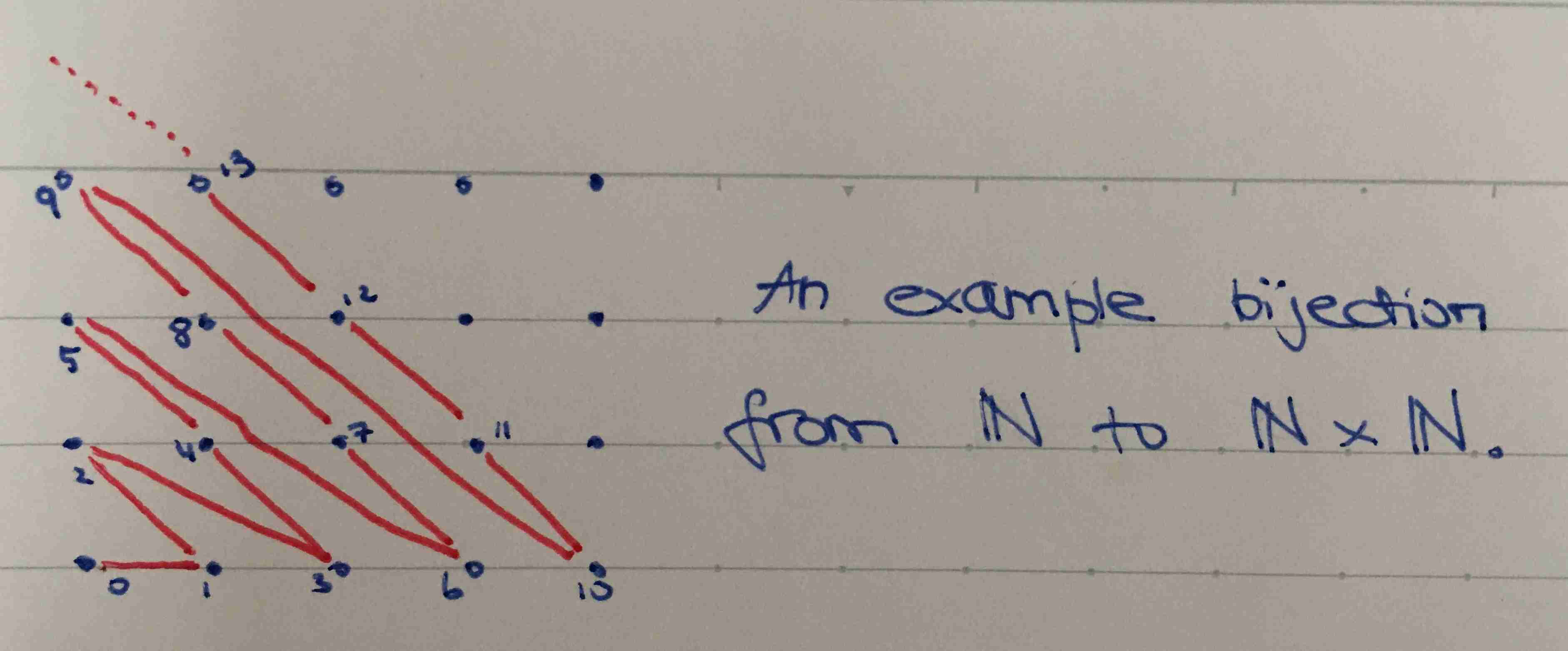Math and science::Analysis::Tao::08. Infinite sets
Count all the things (countability propositions)
A number of propositions related to countable sets:
- All subsets of the natural numbers are at most countable.
- Let \( Y \) be a set, and let \( f: \mathbb{N} \rightarrow Y \) be a function. Then the image \( f(\mathbb{N}) \) is at most countable.
- Let \( X \) be a countable set, and let \( f : X \rightarrow Y \) be a function. Then \( f(X) \) is at most countable.
- Let \( X \) and \( Y \) be countable sets. Then \( X \cup Y \) is a countable set.
- The integers \( \mathbb{Z} \) are countable.
- The set \( A := \{(n, m)\ \in \mathbb{N} \times \mathbb{N} : 0 \le m \le n\} \) is countable.
- The set \( \mathbb{N} \times \mathbb{N} \) is countable.
- The rationals \( Q \) are countable.
- The set of all functions from \( {0, 1} \) to \( \mathbb{N} \) is countable.
- The set of all functions from \( \mathbb{N} \) to \( {0, 1} \) is uncountable, representing an arbitrary binary string.
Maybe some of these should be split up and their proofs outlined.
Once we have a bijection from \( \mathbb{N} \) to \( \mathbb{N} \times \mathbb{N} \), we can have a bijection to the rationals, which are defined as a pairing of two numbers to make a quotient.

